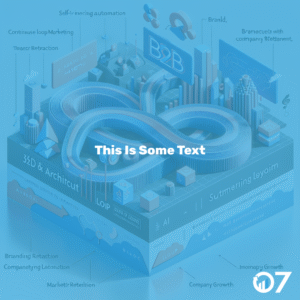The long history of storytelling heralds it as one of the most tried and tested ways to communicate ideas to an audience effectively. As social creatures, humans have an innate fondness for great stories. The simple act of listening to one instinctively elicits empathy in us. Through our empathising with the characters and events of a story we engage with them and build emotional connections.
Business storytelling is similar
Storytelling for a business is similar to the storytelling we experience in our everyday lives. Brand storytelling acts as a medium to communicate the mission and values of your organisation in a consistent way across a variety of platforms.
Why is storytelling so important for my brand?
Engagement
The entire world is now online, using the Internet to perform an array of everyday tasks. A 2018 study by OFCOM found that 1 in 5 people spend over 40 hours a week online. This massive growth in the dependence on digital and social platforms opens your audience up to a barrage of content available with a single click, tap, or voice-search.
What is setting your content apart? There is a sea of other content creators out there, how will you gain the competitive edge in customer engagement? Focus on building a human connection. Storytelling can be used through any platforms where you provide content including blogs, guides, emails and, videos. Creating and distributing content through these channels that provides help and guidance for decision-making provides value. The focus on connection through emotion is the aspect that will make content sharable and memorable.
The use of emotion to communicate and connect has been routinely used in television and video advertisement for years; I’m sure we can all remember an ad that made us cry or laugh. Famous storyteller, Maya Angelou, summed this up wonderfully by saying that people will forget what you said and did, but ‘people will never forget how you made them feel. We are likely to forget facts over time, but emotional connections are readily remembered making emotion-based storytelling the best way to engage with an audience.
What do you need to tell a story?

The order of your story: the Golden Circle
Chances are you have probably heard of Simon Sinek, his ideas have influenced the way we think about a number of business issues. Sinek created the Golden Circle model to outline three main aspects of communication and prioritises where businesses should place their primary focus.
These three categories are:
- Why? – This drills down to the core purpose and values of your brand
- How? – Details the processes and methods that sets your brand apart
- What? – Concerned with which goods and service a brand is providing
The ‘what’ of a brand relays factual information, when an audience hears this it is processed using the neocortex, the analytic part of our brains that understands rational and logical thought patterns. On the other hand, the ‘how’ and the ‘why’ rely on the limbic system. The limbic system structure handles motivation, memory and emotion.
Communicating in a way that appeals to this part of the brain builds emotional connections and helps an audience remember a brand by aligning with their values. These connections are stronger and more long- lasting than those formed by logical as the emotional engagement facilitates an association with brand trust and loyalty. Sinek iterated the importance of ‘starting with why’ because he believes people don’t buy what you are doing; they buy why you do it. Always start with the core purpose of your story.
Essential elements of storytelling
There are three main steps in effective storytelling:
- Start with the characters- In order to tell a good story you must fully understand your audience and respond to their needs and wants. The characters in your story create a connection between yourself as the storyteller and your audience. To ensure you are connecting with the right audience in the best possible way use a buyer persona. This fictional representation of your potential customer will aid you in better understanding their goals and challenges and how your content can serve to educate and entertain them.
- Identify the conflict – What is the key problem or challenge in your story. This outlines how the lesson of your story will transform the character. The conflict should align with the needs and problems of your buyer persona. A clear conflict expresses genuine intention and allows your audience to identify the story with their personal experiences.
- Provide a resolution – This is the natural way to end any story. How are the characters changed by the story? The resolution concludes the story or gives a call to action for the audience. The resolution should fulfil the purpose behind the story by solving the conflict or may suggest next steps or link to further content.
Lets end with a quick checklist for good storytelling
- Use content to create emotional connection
- Be consistent and authentic
- Keep the story clear and concise
Remember that great story telling will always start with sharing your ‘why’.
For further insights and guidance, we invite you to explore our blog at 07hm.co.uk/blog. Here, you’ll find a wealth of information tailored to the needs and challenges of SMEs navigating the digital landscape. Additionally, if you have specific questions or need personalised advice, don’t hesitate to reach out to us via email at info@07hm.co.uk or telephone on 01702 410663.






